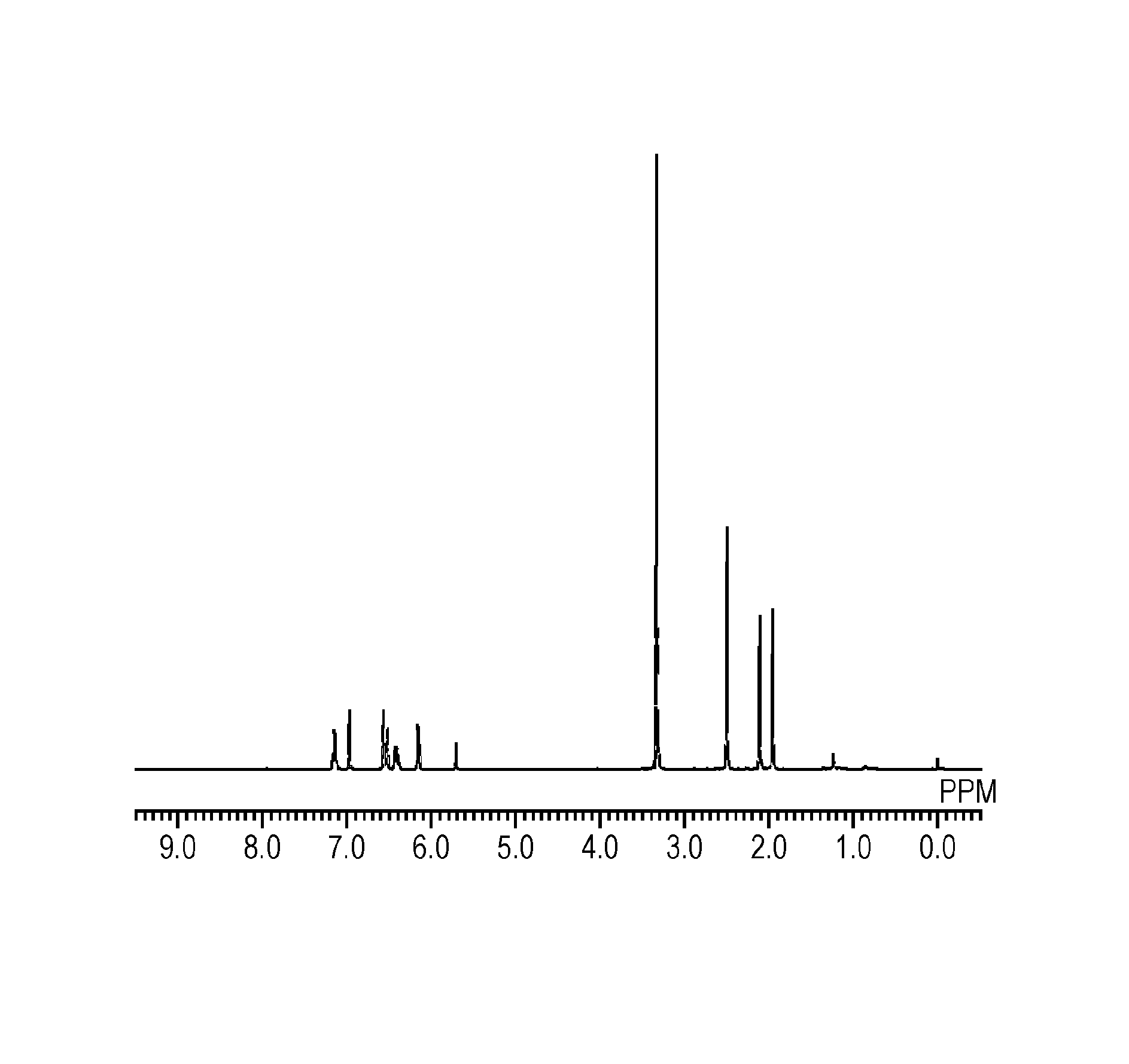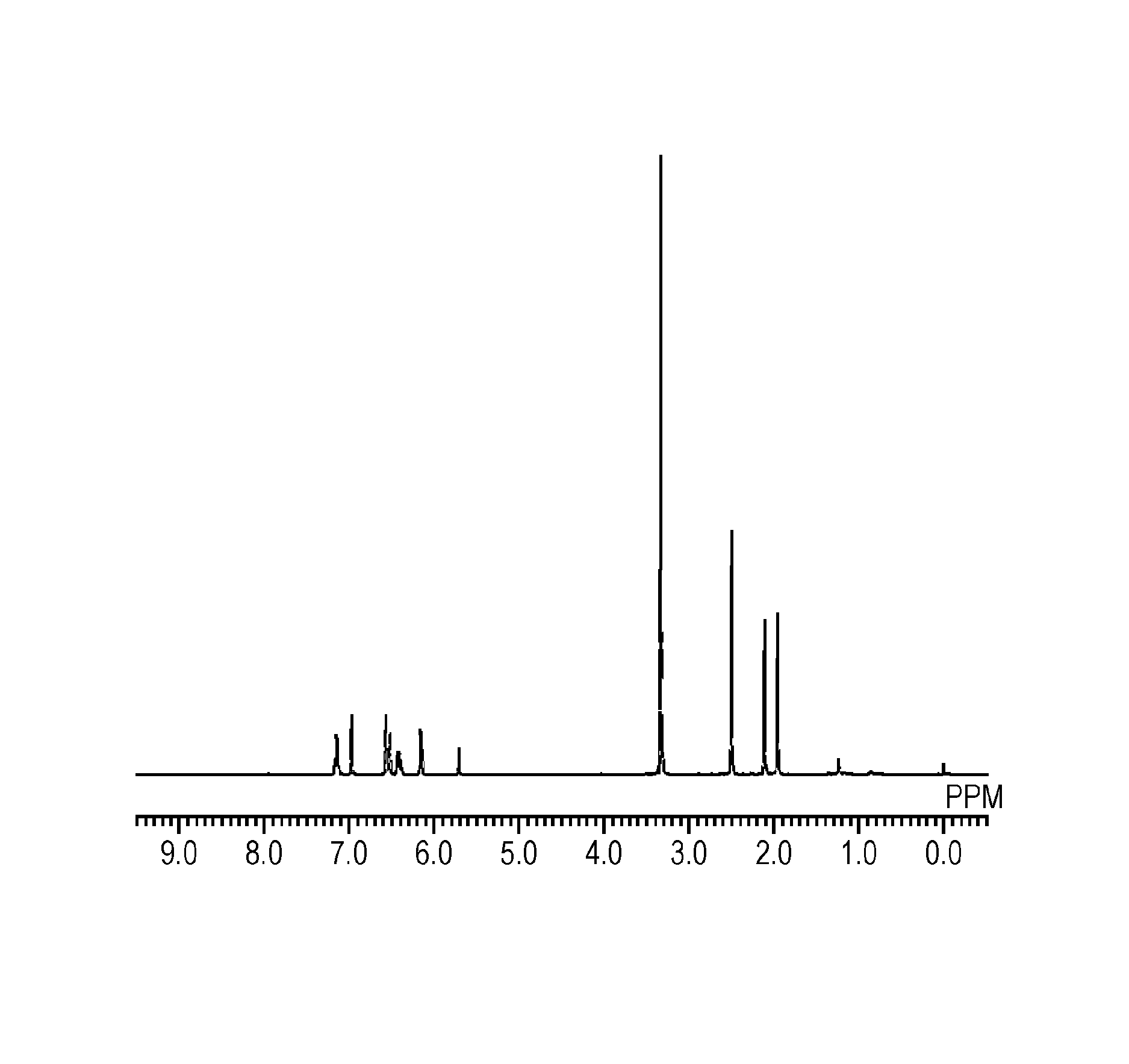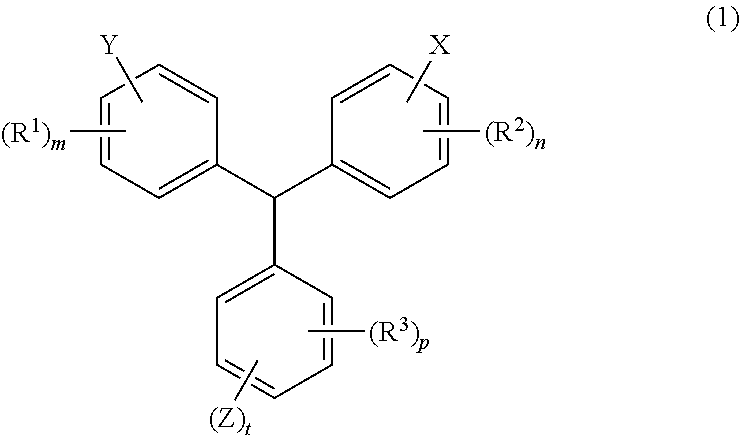Radically curable compound, method for producing radically curable compound, radically curable composition, cured product of the same, and resist-material composition
a technology of radically curable compounds and compounds, applied in the direction of organic chemistry, coatings, chemistry apparatus and processes, etc., can solve the problems of difficult application of thermal nanoimprint lithography to the electric and electronic field, difficult use of polymer resins having a high glass transition temperature, and cracking at the interface between solder resist and sealing resins, etc., to achieve high heat resistance, high heat resistance, and high heat resistance
- Summary
- Abstract
- Description
- Claims
- Application Information
AI Technical Summary
Benefits of technology
Problems solved by technology
Method used
Image
Examples
synthesis example 1
Synthesis of Polycondensate (A-1)
[0105]To a 100-ml two-neck flask equipped with a condenser, 7.32 g (60 mmol) of 2,5-xylenol and 2.44 g (20 mmol) of 4-hydroxybenzaldehyde were charged and dissolved in 20 ml of 2-ethoxyethanol. To this solution being cooled in an ice bath, 2 ml of sulfuric acid was added. The resultant solution was heated and stirred in an oil bath at 100° C. for 2 hours to thereby cause a reaction. After the reaction, the resultant solution was subjected to a reprecipitation process with water to provide a crude product. The crude product was dissolved again in acetone and subjected to a reprecipitation process with water. The resultant product was isolated by filtration and subjected to vacuum drying. This provided 5.93 g of a polycondensate (A-1) having a molecular structure represented by a formula (5-1) below. The purity of the polycondensate (A-1) in the crude product was 87% by mass on the basis of GPC area ratio. The purity of the polycondensate (A-1) finally...
example 1
Synthesis of Radically Curable Compound
[0107]To a 100-ml two-neck flask equipped with a condenser, 1.74 g (5 mmol) of the polycondensate (A-1), 4.10 g (30 mmol) of potassium carbonate, and 10 ml of tetrahydrofuran were charged and stirring was initiated. To this solution being cooled in an ice bath, 3.60 g (20 mmol) of acryloyl chloride was added dropwise over 30 minutes. The resultant solution was heated and stirred in an oil bath at 70° C. for 12 hours to thereby cause a reaction. After the reaction, solid content was separated from the resultant solution by filtration; the filtrate was mixed with 30 ml of chloroform and washed three times with 50 ml of water. The underlying organic layer was separated and dried over sodium sulfate. After that, the solvent was distilled off under a reduced pressure to provide 1.79 g of a radically curable compound (1) that was white acicular crystals. This compound was identified on the basis of peaks of 1H-NMR and it was confirmed that the compou...
PUM
| Property | Measurement | Unit |
|---|---|---|
| temperature | aaaaa | aaaaa |
| Tg | aaaaa | aaaaa |
| temperature | aaaaa | aaaaa |
Abstract
Description
Claims
Application Information
 Login to view more
Login to view more - R&D Engineer
- R&D Manager
- IP Professional
- Industry Leading Data Capabilities
- Powerful AI technology
- Patent DNA Extraction
Browse by: Latest US Patents, China's latest patents, Technical Efficacy Thesaurus, Application Domain, Technology Topic.
© 2024 PatSnap. All rights reserved.Legal|Privacy policy|Modern Slavery Act Transparency Statement|Sitemap



